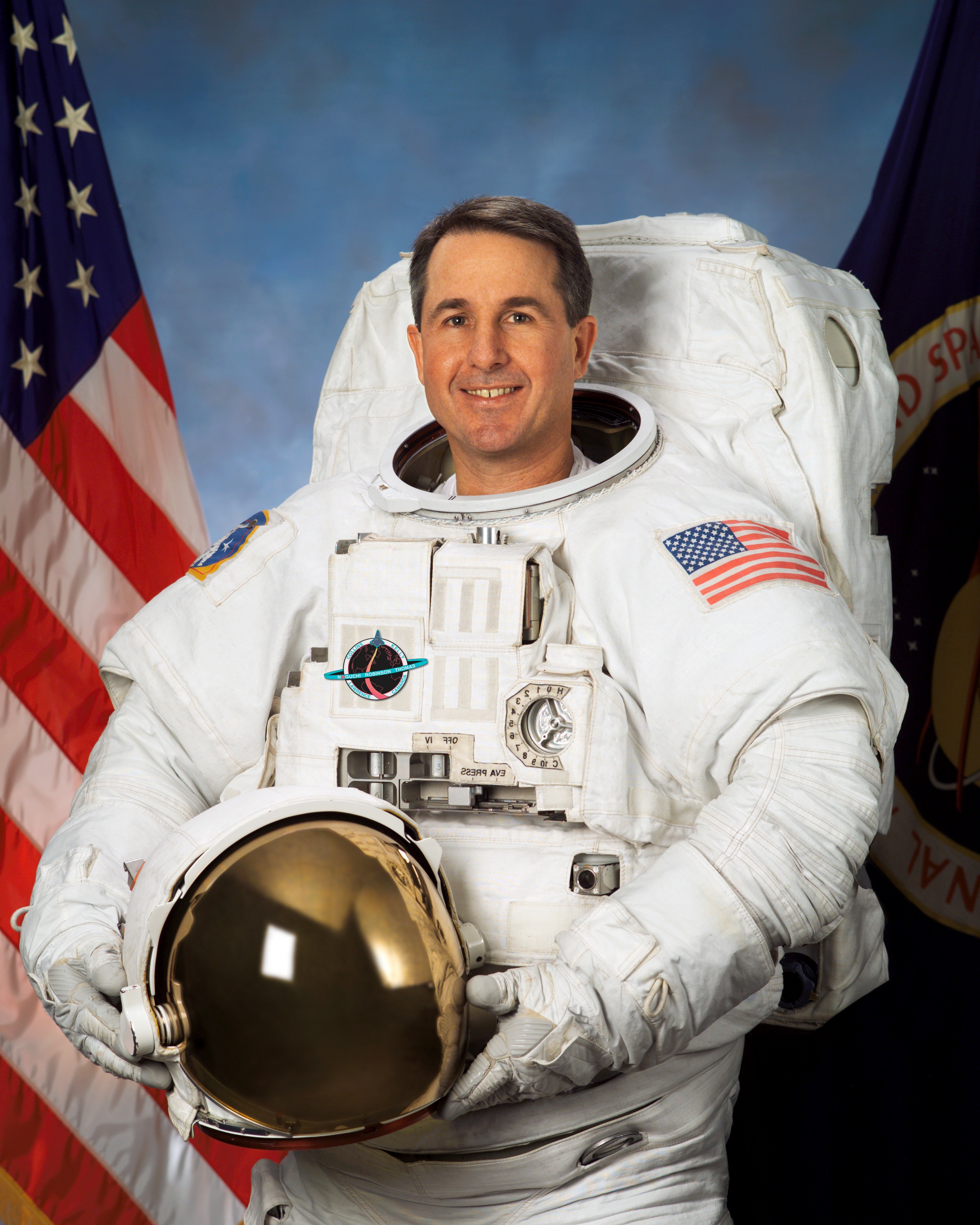Stephen K. Robinson

Steve started working for NASA in 1975 as a student with NASA’s Ames Research Center in California. His pre-NASA career was diverse and dynamic; he worked as a graphic artist, surveyor, musician and radio disc jockey. He joined NASA Ames in 1979 as a research scientist in the fields of fluid dynamics, aerodynamics, experimental instrumentation and computational scientific visualization. While at NASA Ames, Robinson earned Master’s and Doctorate degrees from Stanford University.
After 12 years of rejection from the NASA Astronaut program, Robinson was selected as an astronaut in December 1994. He held a wide variety of technical assignments within the Astronaut Office, including testing space shuttle flight control software, developing onboard computer and flight crew equipment and helping to develop the International Space Station robot arm.
Robinson has flown on four space shuttle missions and has served as a backup crew member for the fourth crew of the International Space Station. His first space mission took place in August 1997 on board the shuttle Discovery. His second and third missions, also on Discovery, followed in late 1998 (when Steve oversaw a study of the aging process with crew member—and former US Senator— John Glenn) and the summer of 2005 (“Return to Flight”). His final mission aboard the shuttle Endeavour took place in 2010. He ultimately logged more than 1,156 hours and 19.8 million miles in space.
Shuttle Mission STS-114 Discovery (July 26 to August 9, 2005) was the high profile “Return to Flight” mission; the first shuttle flight in the two and-a-half years after the loss of space shuttle Columbia. The objective of the mission was to resupply the International Space Station and evaluate new procedures for flight safety and shuttle inspection and repair techniques. Robinson served as Flight Engineer and also performed three spacewalks, including an unplanned and unprecedented repair of space shuttle Discovery’s heat shield. When asked what it was like out on the robotic arm, Robinson said “I wish I could describe it fully to you. It’s so unlike any other experience I’ve ever had. …Analogies don’t work very well. I kept feeling like I was trying to put a wide-angle lens on my whole brain to try to take it in. You’re just a dot in the universe. And the universe is vast. And it’s dynamic, and everything is moving. And the shadows … the sun goes up or down every 45 minutes. So, the shadows were going by rapidly underneath. There were lots of spectacular views and surprising sensations. It was a really huge experience for me.”
Dr. Robinson is currently a tenured professor at University of California, Davis in the Mechanical and Aerospace Engineering Department; he is concurrently employed by NBC as a space correspondent. According to his official NASA biography, Steve “enjoys flying, antique aircraft, kayaking, hiking, drawing, painting and stereo photography. Plays lead guitar in Max Q, the all-astronaut rock-n-roll band; also plays stand-up bass, banjo, mandolin, pedal-steel guitar and cello.”
Recent Articles and Press
- My Endless Sky. Huffington Post, Dec. 7, 2015.
- Stephen K. Robinson's Research, ResearchGate.
- Return to Flight, STS-114, NASA.

